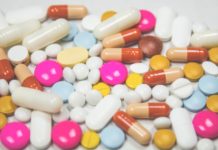
Introduced to market in 1899 by Bayer, Aspirin (acetylsalicylic acid) remains one of the most widely sold medications on the planet. In the beginning, it was mostly used as a painkiller, but that started to change in the late 1980s and early 1990s. Researchers started looking into anti-platelet properties of aspirin, and quickly realized that aspirin may provide some protection from primary (in patients that never had any cardiac events like heart attach etc) and secondary cardiac events (in patients with history of cardiac events).
Up to that point, Aspirin was widely available in the form of a 325mg tablet, but the initial studies opted for lower dosing (in order to minimize GI side effects). First studies looked at 325mg every other day. With some quick 3rd grade math, we get a dose of 162.5mg per day.
Eventually, decision was made to settle on 1/4 dose of the original 325mg tablet for US market. It was nicknamed, “Baby aspirin” (unfortunate name given that it is not recommended for babies due to risk for Reye’s syndrome).
When we asked Bayer for comment, they replied: “Our 81mg aspirin is intentionally formulated to be ¼ the strength of an original strength aspirin.”
Aspirin is also available in other low doses around the world. For example, if you are in UK the low dose is 75mg, and if you are in Australia the low dose is 100mg.

